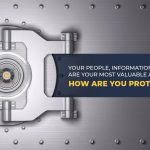Ransomware Myths: 4 Costly Misconceptions That Could Put Your Business at Risk
Ransomware has become one of the most dangerous and costly cyber threats facing New Zealand businesses today. These attacks are not limited to large corporations. Small and medium-sized organisations are also being targeted every day, often with devastating consequences.
Yet many business owners still believe ransomware myths that give them a false sense of security. These misconceptions can lead to poor preparation, slower response times, and higher recovery costs when an attack occurs.
In this guide, we’ll debunk the most common ransomware myths, explain how attacks really unfold, and share what your business can do to protect itself effectively.
Understanding Ransomware
Ransomware is malicious software that encrypts files or entire systems, making them inaccessible until a ransom is paid. Criminals often demand payment in cryptocurrency and may threaten to release sensitive data online if their demands are not met.
Most infections start with phishing emails, compromised websites, or stolen login credentials. Phishing emails remain one of the most common ransomware delivery methods. Learn how advanced protection can stop these attacks before they reach your inbox in our Email Security blog.
Once the ransomware is deployed, it spreads quickly through networks and cloud systems, locking files and halting operations.
What makes ransomware so dangerous is its speed and reach. It can encrypt thousands of files in minutes, and recovery can take weeks if backups are corrupted or security measures are weak.
Myth #1: Paying the Ransom Will Get My Data Back
One of the most damaging ransomware myths is that paying the ransom will restore your data and get your business back online.
In reality, there is no guarantee that attackers will provide a working decryption key. Even when they do, recovery can be incomplete, leaving systems unstable or files corrupted. Some victims pay, receive nothing in return, and end up targeted again because the attackers know they are willing to pay.
The truth is that paying the ransom supports the criminal ecosystem and rarely leads to full recovery.
Instead of relying on criminals, invest in preparation. A strong backup and recovery plan, combined with layered protection such as managed firewalls and continuous monitoring, can help you recover quickly and safely without funding further attacks.
If you want to understand how data protection fits into a broader strategy, read our post on Business Continuity vs Backup.
Key steps:
-
Keep secure, offline or cloud-based backups.
-
Test restoration procedures regularly.
-
Develop and practice an incident response plan.
Preparation is always cheaper and more reliable than paying a ransom.
Myth #2: Backups Alone Will Save My Business
Backups are critical for recovery, but they are not enough on their own. This is one of the most common ransomware myths that still catches businesses out.
Attackers know how valuable backups are, so they often target them first. If backups are stored on the same network or connected to the same systems, they can be encrypted too. In some cases, criminals also steal data before encrypting it, threatening to publish it online even if you successfully restore your systems.
Backups should always be part of a broader cybersecurity plan, not your only line of defence.
At Exodesk, our Cyber Security services help businesses combine backup management with monitoring, network protection, and staff awareness training. This holistic approach keeps data safe even when attackers evolve their tactics.
To make your backups more resilient:
-
Follow the 3-2-1 rule: three copies, two storage types, one offsite.
-
Use access controls and encryption for backup systems.
-
Regularly audit backup procedures and confirm data integrity.
A backup is only valuable if it’s secure, isolated, and restorable.
Myth #3: Antivirus Software Is Enough Protection
Many businesses assume antivirus software alone can stop ransomware. This is one of the most dangerous ransomware myths because it leads to complacency.
Traditional antivirus tools rely on signature detection, which means they can only recognise known threats. Today’s ransomware often uses new or modified code to bypass those defences entirely. Some strains even operate without leaving a file behind, hiding inside trusted applications or legitimate network processes.
Modern protection requires multiple layers that work together to prevent, detect, and respond to threats.
A strong cybersecurity framework should include:
-
Endpoint detection and response (EDR) tools that monitor behaviour rather than just files.
-
Multi-factor authentication (MFA) to stop attackers using stolen credentials.
-
Email filtering and training to prevent phishing-based infections.
-
Network segmentation to contain damage if a breach occurs.
-
Regular updates and patches to close vulnerabilities.
These measures are available through Exodesk’s managed cybersecurity and IT Services, which provide ongoing protection, maintenance, and support.
If you’d like to learn more about the risks that go beyond malware, our Malware Protection post explains how layered defences can stop advanced threats before they spread.
Myth #4: My Business Is Too Small to Be a Target
Another persistent ransomware myth is that cybercriminals only target large corporations. The reality is very different.
Small and medium-sized businesses are often prime targets because they have fewer resources, limited security, and valuable data that can be sold or exploited. Attackers use automated tools to scan the internet for vulnerabilities, hitting any company that looks unprotected.
Every business has something worth stealing: customer records, payroll data, financial details, or intellectual property.
Recent studies show that small businesses are the victims in more than half of all ransomware incidents globally. In New Zealand, attacks on smaller firms are increasing because attackers know recovery is harder and ransom payments are more likely.
Partnering with a managed provider like Exodesk gives small and medium-sized businesses the same level of protection large enterprises enjoy, including proactive monitoring, patch management, and data recovery support.
The Evolution of Ransomware
Understanding how ransomware has evolved helps explain why these ransomware myths persist.
Early ransomware attacks were relatively simple, spread through spam emails or infected USB drives. Today, ransomware is big business. Criminal groups operate like professional organisations, offering “ransomware-as-a-service” packages that anyone can buy and deploy.
Attackers spend weeks inside networks before launching their attack. They study your systems, steal credentials, and disable security tools before encrypting data. They may even use stolen credentials traded on the Dark Web to gain entry without detection.
Once an attack is launched, the focus shifts from infection to extortion. Some groups contact victims directly, threatening reputational harm or data leaks if demands aren’t met.
This evolution is why no single tool or product can protect your business. True security requires a multi-layered, managed approach that addresses prevention, detection, and response.
The Real Cost of Believing Ransomware Myths
Believing ransomware myths doesn’t just put data at risk; it affects your entire business.
The financial cost of recovery can reach tens or hundreds of thousands of dollars. Downtime can disrupt operations for weeks. The reputational damage and loss of client trust can take years to rebuild.
For smaller organisations, these impacts can be fatal. Studies show that many small businesses never fully recover after a major cyberattack.
The cost of prevention, by comparison, is minimal. Investing in cybersecurity training, multi-factor authentication, and professional monitoring costs far less than restoring systems after an attack.
Building a Real Ransomware Defence
Protecting against ransomware isn’t about luck. It’s about strategy. Here’s how your business can build a practical defence against real-world threats.
1. Educate Employees
Human error remains one of the biggest risks. Regular awareness training helps staff identify phishing emails and avoid unsafe links.
2. Use Strong Authentication
Combine unique, complex passwords with MFA to prevent attackers using stolen credentials. Our Password Manager article explains how to simplify and strengthen password practices.
3. Keep Systems Updated
Unpatched software is a major entry point for ransomware. Enable automatic updates where possible and retire unsupported applications.
4. Segment and Monitor Networks
Separate critical systems from everyday workstations. Continuous monitoring can detect anomalies early and limit damage.
5. Test Recovery Plans
Don’t assume backups will work when needed. Test your disaster recovery process regularly and refine it based on results.
6. Establish a Response Plan
Your team should know who to call and what to do in the first hour after detection. A fast, coordinated response can reduce downtime dramatically.
Comprehensive protection doesn’t just stop ransomware; it helps your business build resilience. Learn more about how Exodesk’s Cyber Security services combine these defences into a single managed solution.
Compliance and Insurance Considerations
Cybersecurity is no longer just an IT concern; it’s a compliance and insurance requirement.
Under the New Zealand Privacy Act 2020, businesses must protect personal data and report significant breaches. Failing to secure data can lead to regulatory action and loss of reputation.
Cyber insurance providers are also raising their standards. Many now require businesses to implement MFA, endpoint protection, and tested recovery plans before offering coverage. Believing ransomware myths can not only increase your risk but also affect your ability to obtain insurance.
Frequently Asked Questions
1. What is ransomware?
Ransomware is malware that locks your files or systems and demands payment for their release. It often spreads through phishing or compromised logins.
2. Should I pay the ransom?
No. Paying does not guarantee recovery and encourages further attacks. Focus on prevention, secure backups, and expert recovery support.
3. Are backups enough?
Backups are essential, but they must be secure, isolated, and combined with other defences like monitoring and MFA.
4. Can antivirus stop ransomware?
Not reliably. Modern ransomware can bypass traditional antivirus programs. Layered security is crucial.
5. Are small businesses really at risk?
Yes. Small and medium-sized businesses are frequent targets because attackers know they often lack dedicated security teams.
6. What should I do if I’m attacked?
Disconnect affected systems, contact your IT provider immediately, and avoid paying the ransom. Professional assistance can help with safe recovery.
7. How can Exodesk help?
Exodesk provides complete IT and cybersecurity solutions, including managed services, network monitoring, Dark Web scans, and recovery planning.
Final Thoughts
Ransomware myths persist because they sound reassuring. Unfortunately, they also leave businesses vulnerable. The reality is that no company is too small, no backup is completely safe, and no single product can prevent every attack.
A strong defence requires preparation, layered protection, and trusted expertise.
At Exodesk, we help New Zealand businesses stay ahead of cyber threats through managed IT services, secure backups, and proactive monitoring.
To discuss how we can strengthen your cybersecurity posture, visit Exodesk or connect with us on LinkedIn to keep up with more insights.


